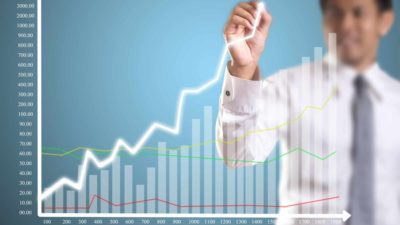Yields on Australia's big banks remain at inviting levels, despite 3 of the 4 recently cutting dividends. But dividend-seeking investors with a longer-term view could be forgiven for taking a cautious approach.
Difficult conditions, which have plagued the main players of the banking industry since the Royal Commission, are evolving as new challenges emerge. Major banks have been forced to cut dividends in the face of increased remediation costs and competition combined with subdued economic conditions.
Dividend cuts
In May, National Australia Bank Ltd. (ASX: NAB) cut its dividend 16% from 99 cents to 83 cents, its first dividend reduction since 2009. The bank reported half year results were impacted by remediation costs. Cash earnings were down 0.3% to $3,279 million. Earnings per share were down 3.2% to 113.3 cents per share.
In October, Australia and New Zealand Banking Group Limited (ASX: ANZ) announced dividends would be held steady, but franking would be reduced to 70%. ANZ reported facing challenging conditions in FY19 with statutory profit down 7% to $6 billion.
Net interest income was down to $14,339 million in FY19 compared to $15,514 million the previous year. ANZ also announced an additional charge of $682 million in FY19 relating to an increase in provisions for remediation work.
Last week, Westpac Banking Corp (ASX: WBC) cut its dividend by nearly 15% from 94 cents to 80 cents. In its annual report released at the same time, Westpac announced a drop in net profit after tax (NPAT) of 16%. Cash earnings were down 15% to $6,849 million and cash earnings per share were down 16%.
Westpac also announced a $2 billion underwritten placement to institutional investors last week. The placement was followed by a share purchase plan to raise approximately $500 million from retail investors. Shares in Westpac were rapidly sold off following the announcement with the stock dropping 5% immediately.
It remains to be seen whether Commonwealth Bank of Australia (ASX: CBA) will reduce its dividend or franking at all.
Bank yields
NAB is currently yielding 6.5%, ANZ 6.1%, Westpac 6.9%, and CBA 5.5%. Certainly, you will get a greater return in dividends by investing in any of their shares than by keeping money in any of their accounts.
Share prices of the big four have largely recovered from the depths plumbed earlier this year when the Royal Commission released its final report. Despite this, remediation programs are ongoing and in some cases may take years to conclude.
NAB is currently trading at $27.86, up 21% from a low of $22.84 in December. CBA is up nearly 13% from December lows to $78.07. ANZ is up 11.3% over 2019 to $26.04, while Westpac is up 14% to $27.17.
In the current low rate environment, shares with decent yields can be particularly appealing. The opportunity to potentially also book some capital growth can be considered a bonus, but is not guaranteed. It also comes the possibility of capital loss.
Customer revolution
The incoming Open Banking regime will make it easier for customers to switch banking providers, threatening the dominance of the big four. Neobanks and online lenders have emerged to compete with the ANZ, CBA, NAB, and Westpac alongside the smaller banks and credit unions.
Customers who have become disillusioned with mainstream financial services providers may choose to embrace the opportunity enabled by Open Banking. This could result in an increase in the customer base of the alternative financial services providers at the expense of the majors.
The new regime is designed to give customers 'ownership' of their data, allowing them to share it with accredited parties such as other financial institutions. Open Banking has the potential to shift the balance of power in the banking industry, allowing smaller and more nimble competitors to gain market share.
Economic conditions
At the same time, Australia is facing into slowing economic growth with stubborn unemployment. The Reserve Bank of Australia has been cutting interest rates in a bid to face off looming recession. Both federal and state governments are investing in infrastructure spending to stimulate the economy.
Bad debts are not currently significant for the big banks, however were economic conditions to deteriorate this could change. An increase in arrears and defaults would impact directly on banks' bottom lines. The decrease in borrowing associated with a recession would also negatively impact profits, leaving less to be distributed to shareholders.
Credit growth has been slower than the banks would like. Credit recorded its lowest annual growth since records began in August, the latest month for which records are available. Credit growth is considered a key driver of economic growth as it allows business to invest as required to enable growth.
Can the dividends continue?
The question is whether bank profits and thus dividends can continue in the face of these increased pressures. Payout ratios on the big four banks are around 70-75%, and will come under pressure if profits decline. Investors also face the risk of capital losses if share prices decline in the face of the aforementioned factors.
Some challenges, such as the broader economic environment, are largely beyond the control of ANZ, CBA, NAB, and Westpac. What the major banks can control is their response to the regulatory and remediation challenges they are faced with.
Foolish takeaway
For years the big four banks have been a reliable source of dividends. The past couple of years have been difficult, however, resulting in stock price turbulence, profit hits, and now dividend cuts.








